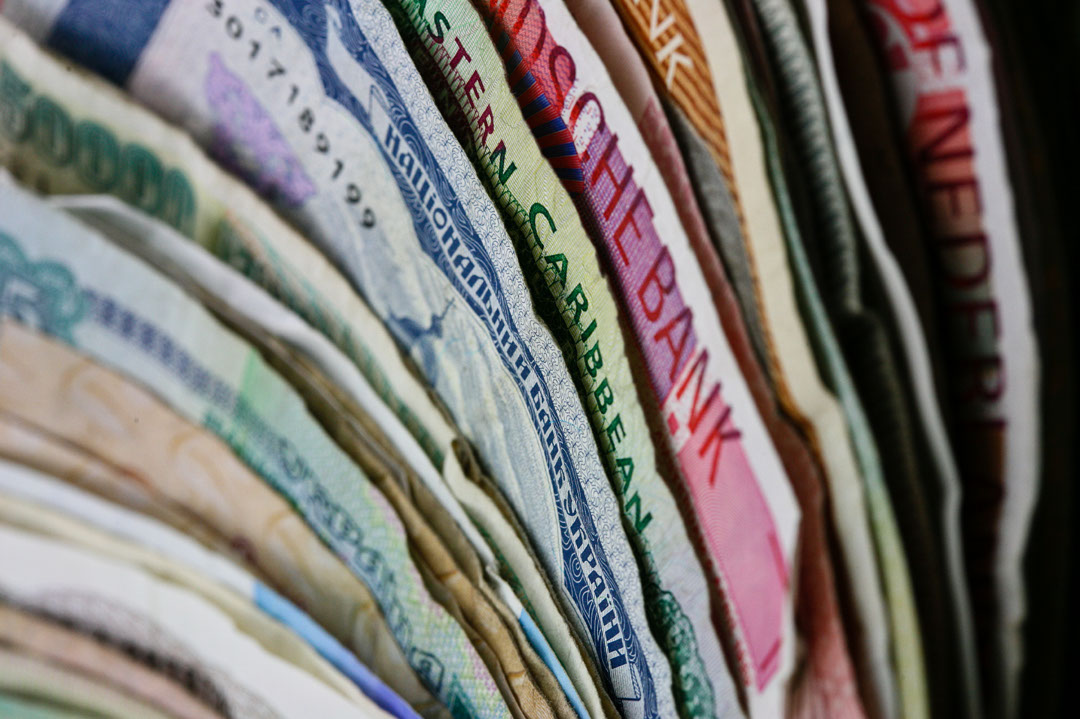The United States’ rate increases continue to impact currency changes and a variety of domestic issues. At the domestic level, policy decisions and supply and demand shifts have affected currency movements.
This November, policy decisions consist of modifying the auction rate and changing the interest rates. Economic projections for inflation and growth affected a few countries including Hungary and Sierra Leone.
Currencies Losing Value Against the USD:
SRD – Suriname Dollar
The Suriname dollar depreciated due to ongoing economic and political issues within and outside of the country. The country suffered from world events such as the Russian-Ukrainian war and the COVID-19 pandemic, and domestic issues such as severe flooding, and the tough implementation of an IMF economic program . Last year’s inflation increased immensely, especially food and transportation costs.
COP – Colombian Peso
The Colombian peso weakened after the government announced a possible tax on capital outflows. President Gustavo Petro disagreed with the Colombian Central Bank’s decision to increase interest rates because he believes they are doing so to decrease capital outflows. The president believes a direct tax will be more efficient to solving the issue. The president also received criticism when he announced the removal of subsidies for fuel. These decisions and announcements generated a lack of confidence in the president’s policies and negatively affected the peso.
NOK – Norwegian Krone
The United States’ interest rate hikes and future oil prices affected the krone. Oil prices are expected to remain stagnant as there is expectation that supply will be increased to meet demand compared to last year. Interest rate hikes by the FED made the United States dollar a haven for investments from other weaker currencies such as the krone.
HUF – Hungarian Forint
The forint decreased further after a poor inflation report in the second week of October. The currency value was also weakened after the reduction of subsidies and stalled interest rate increases by the Central Bank.
ARS – Argentine Peso
The increasing value of the United States dollar and inflation numbers continue to apply downwards pressure to the Argentine peso. Strangely, investments in the past few months have increased, particularly in machinery and construction due to the surplus of pesos in the economy despite the extreme inflation.
LAK – Laotian Kip
The significant difference between supply and demand of foreign currency within Laos caused the kip to depreciate. Stagnant wages make it difficult for people to purchase basic needs at raised prices. To make matters worse, it is becoming more difficult as an import country to obtain goods overseas due to increasing import costs.
NZD – New Zealand Dollar
Aggressive interest rate hikes by the United States’ Federal Bank caused the New Zealand dollar to fall. The Reserve Bank of New Zealand increased rates slowly and inflation reports missed expectations in November. Historical sell offs for the New Zealand dollar witnessed a quick rebound, so there is some speculation that the same will occur again later this year.
AUD – Australian Dollar
Similar to the New Zealand dollar, the Australian dollar depreciated due to the increasing United States dollar. According to the Australian Central Bank, the exchange rate change is not as severe due to Australia’s currency strength compared to its trading partners.
ZWL – Zimbabwean Dollar
The currency crisis in Zimbabwe continues to persist rather than stabilize as the value of Zim dollars fall due to rising inflation. Zim dollars are usually spent immediately when received so there is remaining utility for the spender before the value falls. There is also a foreign exchange issue regarding a deteriorating supply of USD notes. Many of the notes are soiled and damaged and are rejected by certain market vendors. The government responded stating that it doesn’t have the authority to print more bank notes since the currency belongs to the United States government.
GHS – Ghanaian Cedi
The cedi continues to depreciate after discussions took place with domestic bond investors to create a debt restructuring strategy. The discussion goal was to collect opinions on what kind of strategy can be implemented to increase the chances of receiving a relief package from the IMF. Foreign investors reduced their stake in corporate and domestic bonds to 12.3% according to data from Central Securities Depository Ghana Ltd. International reserves have also shrunk as Ghana attempts to cover import costs.
SLL – Sierra Leonean Leone
The IMF downgraded Sierra Leone’s growth projection for 2022. It cited several factors that contributed to this review including exchange rate depreciation from earlier this year, decrease in consumption, and the expected impact of inflation. The Bank of Sierra Leone increased their benchmark rate the first week of October to 17% in response to rising prices.
Currencies Gaining Value Against the USD:
SSP – South Sudanese Pound
The Sudanese pound’s recent turnaround was a direct result of the South Sudanese Central Bank’s increase of the weekly auction from 13$ million USD to 20 million USD in August. The governor of the Central Bank, Johnny Ohisa Damian, said the increase of the auction amount had a significant impact in the foreign exchange market. He also stated that inflation decreased from July to August and, since the exchange rate is showing signs of stabilization, the Central Bank will look to lower the auction amount from 20 million USD to 10 million USD.
How do currency changes affect compensation?
For up-to-date figures, please reach out to your AIRINC representative or click here to reach our inquiries team now.
Do you need insight & action to address local inflation? Read more here.





%20(29).png)

%20(28).png)

